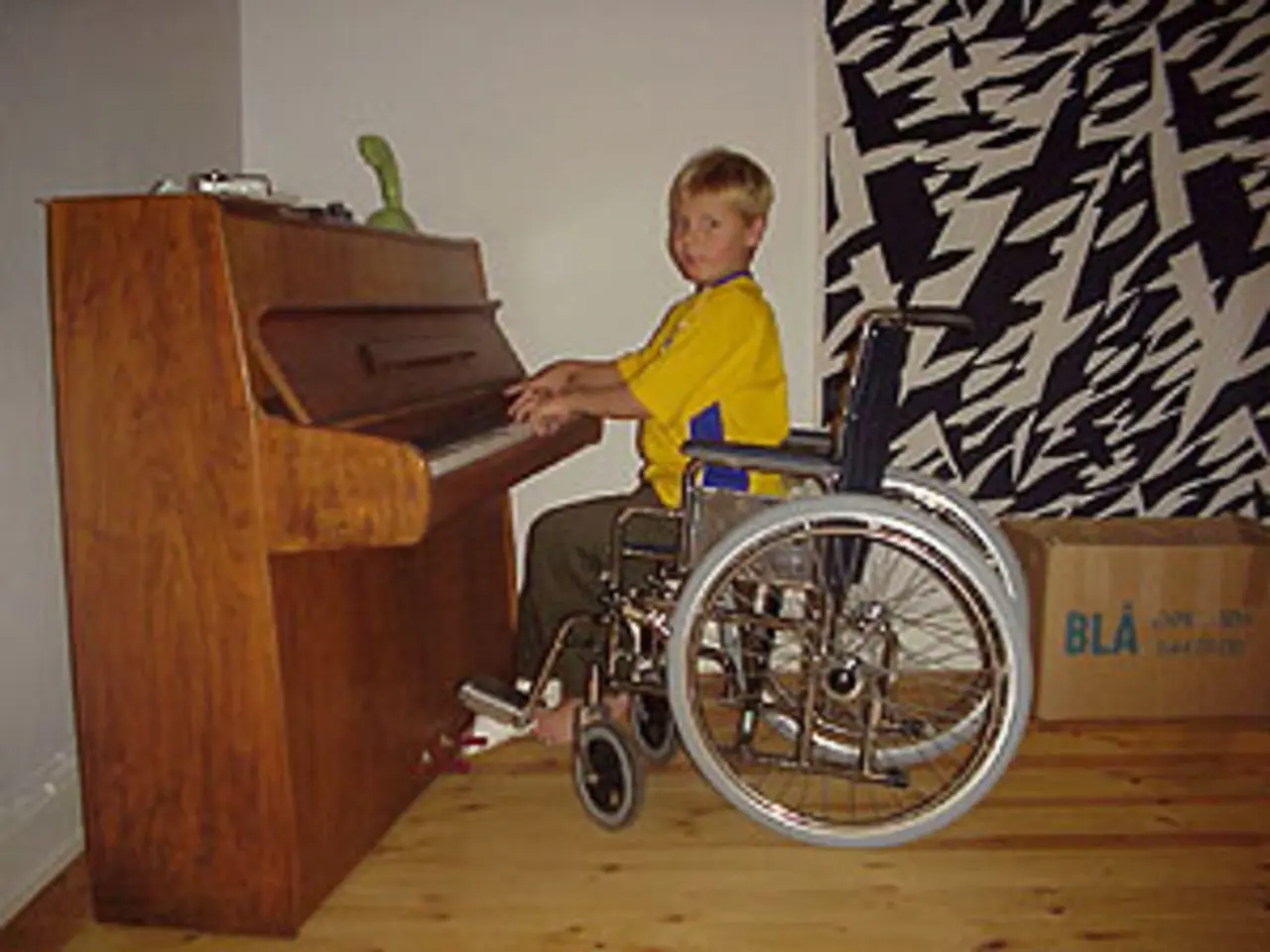Uncontrolled Altercation's Conclusion: The Courtroom Verdict for the Individual with Autism Accused of Pushing a Girl in a Shopping Cart Inside a Store
In a crowded store on May 11th, an unexpected incident unfolded involving a young boy named Sasha, who has autism. The incident, which led to a criminal case, sheds light on the challenges faced by individuals with autism in unfamiliar and crowded environments.
Sasha, in the midst of a "meltdown" due to excessive sensory overload, accidentally hit a stroller with a child in it with his elbow. The sudden impact caused the stroller and the child to tip over. Concerned, Sasha attempted to take the child from the parents, but the child started crying, adding to the chaos.
The incident resulted in a criminal case being opened against Sasha under Part 1 of Article 339 of the Criminal Code of Belarus. However, a forensic psychiatric examination revealed that Sasha's actions were a result of his mental state and his inability to understand the public danger of his actions, given his autism.
Autism can significantly affect sensory processing and public behavior in crowded, unfamiliar environments. Autistic individuals often experience sensory overload due to differences in sensory processing, which can make them hypersensitive or hyposensitive to stimuli across various senses. In crowded places like malls, schools, or public transport, the combination of visual distractions, loud noises, and unpredictable social stimuli can surpass their sensory processing capacity.
This overload impairs their ability to filter and integrate environmental stimuli effectively, leading to increased stress or anxiety, the need to escape or seek quiet spaces, meltdowns or shutdowns when overwhelmed, and difficulty engaging socially or maintaining routine behaviors due to environmental unpredictability.
To support individuals with autism in these environments, strategies such as creating sensory-friendly spaces, providing quiet areas for breaks, minimizing sensory triggers, and establishing predictable routines are recommended. Community adaptations like sensory-friendly shopping hours, reduced crowds, and structured support help reduce sensory overload and improve comfort and inclusion for autistic individuals in public settings.
Sasha was taken to Noyinky by ambulance with his mother, likely for further evaluation and support. It is crucial to remember that individuals with autism are not intentionally causing harm but are responding to their sensory distress in the best way they can. Understanding and accommodating these challenges can lead to a more inclusive and understanding society for all.
References:
[1] American Psychological Association. (2020). Autism Spectrum Disorder. Retrieved from https://www.apa.org/topics/autism
[2] National Autistic Society. (2021). Sensory. Retrieved from https://www.autism.org.uk/about/what-is/sensory/
[3] Autism Speaks. (2021). Sensory Sensitivity. Retrieved from https://www.autismspeaks.org/autism-101/sensory-sensitivity
[4] Lovaas, O. I. (1987). Behavioral treatment and normal educational and intellectual functioning in young autistic children. Journal of Applied Behavior Analysis, 20(2), 191-210.
[5] Kern, J. K., & Yoder, A. L. (2011). Sensory integration and autism: A review of the research. American Journal of Occupational Therapy, 65(3), 283-296.
- Sasha's unintentional actions at the crowded store, stemming from his autism-induced sensory overload, highlight the need for health-and-wellness considerations in the development of science-backed strategies for mental-health support in public spaces, such as creating sensory-friendly environments for autistic individuals.
- On a broader scale, understanding the impact of autism on sensory processing and public behavior, particularly in health-and-wellness domains like mental health, can foster empathy and pave the way for more inclusive and supportive communities, promoting science-based accommodations for autistic individuals in everyday settings.




